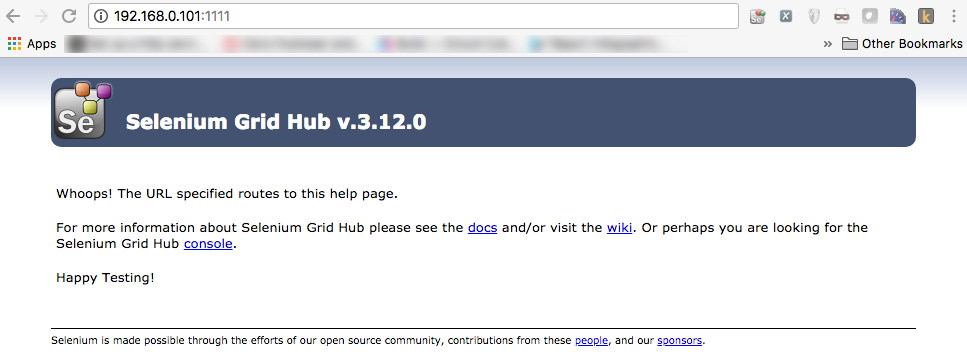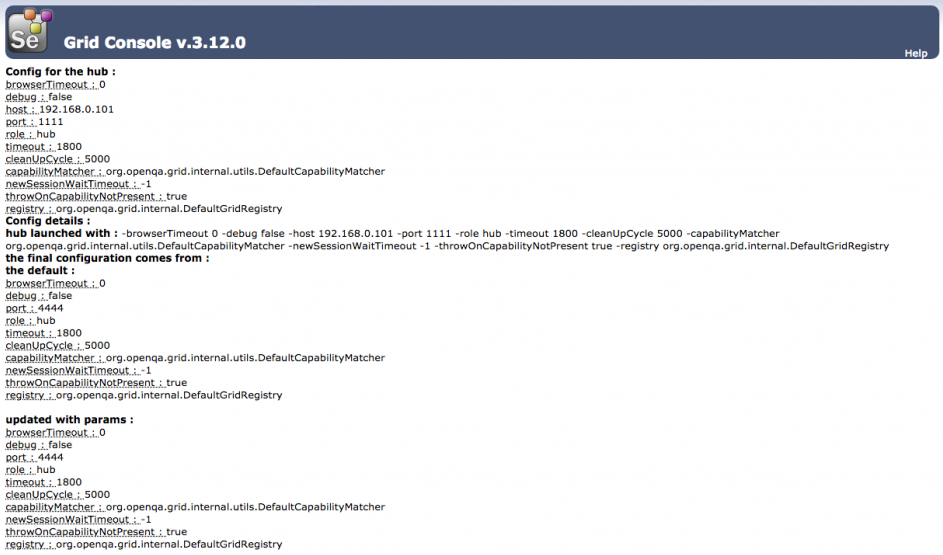The hub is the central point of a Selenium Grid. It has a registry of all the available nodes that are connected and part of a particular grid. The hub is a Selenium Standalone server running in the hub mode, listening on port 4444 of a machine by default. The test scripts will try to connect to the hub on this port, just as any Remote WebDriver. The hub will take care of rerouting the test-script traffic to the appropriate test-platform node. Let's see how we can start a hub node. Navigate to the location where you have your Selenium server JAR file and execute the following command:
java -jar selenium-server-standalone-3.12.0.jar -role hub
Doing this will start your server in the hub mode. By default, the server starts listening on port 4444; however, you can start your server on the port of your choice. Suppose you want to start the server on port 1111; it can be done as follows:
java -jar selenium-server-standalone-3.12.0.jar -role hub –port 1111
The following screenshot shows the console output of the Grid Hub being started on port 1111:

All the test scripts should connect to the hub on this port. Now launch your browser and connect to the machine that is hosting your hub on port 1111. Here, the machine that is hosting my hub has the IP address 192.168.0.101.
What you should see on your browser is shown in the following screenshot:

It shows the version of the server that is being used as the Grid Hub. Now click the Console link to navigate to the Grid Console:

As you can see, the page talks about many configuration parameters. We will discuss these configuration parameters in the Configuring Selenium Grid section. So, you've now learned how to start a grid on a port and listen for connections.
